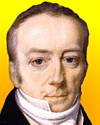
On 27 Jun 1829, the British chemist James Smithson died, who bequeathed his inherited fortune, over $500,000 (then) to found the Smithsonian Institution in Washington, D.C. The funds were deposited with Congress, which initially squandered them on bad investments. (Surprised?) If you did not already know that, learn more in this article on The Smithsonian Institution from Putnam’s Monthly (1854). Notice that this article was written within a very few years after the founding of the Smithsonian Institution in 1846.
After Congress made good on the lost funds, there still followed squabbles by politicians over what to do with the money—many pushing their own pet projects. (Surprised?) The article describes how discussions arrived at a good faith interpretation of Smithson’s intention for the “increase and diffusion of knowledge.”
The uncredited author (the editor, perhaps?) outlines examples of subsequent accomplishments. Perhaps you will find particularly interesting the lengthy footnote about the newly established Smithsonian’s contribution to research on the path of newly discovered planet Neptune.
The writer ends by editorializing. He suggests relocation from the unduly expensive, large building. Then, he makes a plea to fund other worthy goals entirely separately (national library, art gallery, museum) to devote Smithson’s gift in full to his intended purpose for the “increase and diffusion of knowledge.”

On 27 Jun 1885, Pierre Montet was born, who has been called the dean of modern Egyptologists. His notable work includes conducting major excavations at sites in the Nile Delta, discovering, in particular, funerary treasures from the 21st and 22nd dynasties. Today's book pick is: Everyday Life in Egypt in the Days of Ramesses The Great, by Pierre Montet, which is a classic, renowned for its accuracy and scope. His book conveys the richness and complexity of ancient Egyptian everyday life, focussing on the era of the great builders at Karnak and Luxor. With a masterful appreciation of the ancient Egyptian way of life, Montet provides insight into the day to day activities of royalty and priests, artisans and professionals, peasants and slaves. He gives colorful descriptions of dwelling places, seasonal festivities, holiday observances, family life, travel, justice, warfare, and the rites of burial.
This is an excellent, very readable book, based on detailed research, using paintings and carvings together with pictorial and literary sources, including some papyrus documents, as main sources for his well-organized descriptions throughout.
It is available from Amazon, typically about New from $18.95. Used from $5.84. (As of earlier time of writing - subject to change.)
 | As to writing another book on geometry [to replace Euclid] the middle ages would have as soon thought of composing another New Testament. |
 | It is easier to square the circle than to get round a mathematician. |
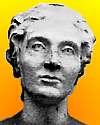 | In describing the honourable mission I charged him with, M. Pernety informed me that he made my name known to you. This leads me to confess that I am not as completely unknown to you as you might believe, but that fearing the ridicule attached to a female scientist, I have previously taken the name of M. LeBlanc in communicating to you those notes that, no doubt, do not deserve the indulgence with which you have responded. Explaining her use of a male psuedonym. |
| Before you look at today's web page, see if you can answer some of these questions about the events that happened on this day. Some of the names are very familiar. Others will likely stump you. Tickle your curiosity with these questions, then check your answers on today's web page. | |
| Births | |
 | Hans Spemann, born 27 Jun 1869, was a German embryologist who was awarded the Nobel Prize for Physiology and Medicine (1935) for his discovery of the effect now known as embryonic induction. What is the result of embryonic induction? |
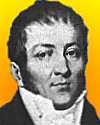 | Alexis Bouvard, born 27 Jun 1767, was a French astronomer and director of the Paris Observatory, who is noted for discovering eight comets and writing Tables astronomiques of Jupiter and Saturn (1808) and of Uranus (1821). Bouvard’s tables accurately predicted orbital locations of Jupiter and Saturn, but his tables for Uranus failed. What was the result of finding irregularities in his prediction for the orbit of Uranus? |
| Deaths | |
 | Zheng Zuoxin (1906-1998) was considered the founder of modern Chinese ornithology. He wrote A Synopsis of the Avifauna of China. In a simple word, what were the subjects of his studies? |
 | James Smithson (1765-1829) was an English scientist who provided funds in his will “for the increase and diffusion of knowledge” in the U.S. He had inherited his fortune chiefly through his mother’s family. He was a chemist and minerologist who published 27 scientific papers. For what is this man remembered? |
| Events | |
 | In 1978, Seasat, an experimental U.S. ocean surveillance satellite was launched. In a period of 36 hours was able to monitor nearly 96% of the oceanic surface. The measurement equipment on board was able to penetrate cloud cover and report measurements such as wave height, water temperature, currents, winds, icebergs, and coastal characteristics. How many orbits per day would the satellite make around Earth? |
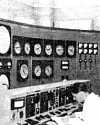 | On 27 Jun of a certain year, the world’s first grid-connected atomic power station began producing electricity in Obninsk, U.S.S.R. In what decade was this event? |
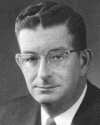 | On 27 Jun 1960, chlorophyll "a" was first synthesized by Robert Burns Woodward. This molecule consists of 55 carbon atoms linked with 72 hydrogen atoms, 5 atoms of oxygen and 1 atom of a metallic element. What is the metallic element in a molecule of chlorophyll? |
Fast answers for the previous newsletter for June 26: from the River Kelvin, near Glasgow, where he spent his life teaching at the university there • Charles Messier • large-scale spinning of high-quality textile thread • smallpox • CN Tower, named after the Canadian National Railway, which built it on the CN rail yard for TV and radio communications • the iron landslide and moldboard were cast in one piece.
 If you enjoy this newsletter, the website, or wish to offer encouragement or ideas, please send feedback by using your mail reader Reply button.
If you enjoy this newsletter, the website, or wish to offer encouragement or ideas, please send feedback by using your mail reader Reply button. Your click on a Facebook, StumbleUpon, or other social button on the site webpages is also a welcome sign of appreciation. Thank you for using them.
© This newsletter is copyright 2020 by todayinsci.com. Please respect the Webmaster's wishes and do not put copies online of the Newsletter — or any Today in Science History webpage. (If you already have done so, please remove them. Thank you.) Offline use in education is encouraged such as a printout on a bulletin board, or projected for classroom viewing. Online, descriptive links to our pages are welcomed, as these will provide a reader with the most recent revisions, additions and/or corrections of a webpage. For any other copyright questions, please contact the Webmaster by using your mail reader Reply button.
--
If you do not want to receive any more newsletters, Unsubscribe
To update your preferences and to unsubscribe visit this link
Executive Real Estate Business Class
-
"It was like a man with wings. It wasn't like anything you'd see on TV or in a monster movie." ...
About the publisher
Search This Blog
Blog Archive
-
▼
2021
(585)
-
▼
June
(64)
- On This Day for June 30 - Night of the Long Knives...
- Newsletter for Wednesday 30 June.
- On This Day for June 29 - London's Globe Theatre d...
- Newsletter for Tuesday 29 June.
- On This Day for June 28 - Assassination of Archduk...
- Newsletter for Monday 28 June.
- On This Day for June 27 - Yen made official moneta...
- Newsletter for Sunday 27 June.
- On This Day for June 26 - Opening of CN Tower, Bab...
- Newsletter for Saturday 26 June.
- On This Day for June 25 - Korean War begun, Antoni...
- Newsletter for Friday 25 June.
- On This Day for June 24 - Russia invaded by Napole...
- Newsletter for Thursday 24 June.
- On This Day for June 23 - Battle of Bannockburn, C...
- Newsletter for Wednesday 23 June.
- On This Day for June 22 - Mutiny against Henry Hud...
- Newsletter for Tuesday 22 June.
- On This Day for June 21 - Japanese forces defeated...
- Newsletter for Monday 21 June.
- On This Day for June 20 - Casket Letters found, Ho...
- Newsletter for Sunday 20 June.
- Tonight at 8/7c: Watch ‘Fight the Power’
- On This Day for June 19 - Rosenbergs executed for ...
- Newsletter for Saturday 19 June.
- On This Day for June 18 - War of 1812 begun, Sir P...
- Newsletter for Friday 18 June.
- On This Day for June 17 - Arrest of O.J. Simpson, ...
- Newsletter for Thursday 17 June.
- On This Day for June 16 - First woman in space, Jo...
- Newsletter for Wednesday 16 June.
- On This Day for June 15 - Magna Carta sealed by Ki...
- Newsletter for Tuesday 15 June.
- On This Day for June 14 - First prisoners at Ausch...
- Newsletter for Monday 14 June.
- On This Day for June 13 - Historic meeting between...
- Newsletter for Sunday 13 June.
- On This Day for June 12 - Election of Boris Yeltsi...
- Newsletter for Saturday 12 June.
- Listen Now! Blindspot: Tulsa Burning Podcast
- On This Day for June 11 - Oklahoma City bomber exe...
- Newsletter for Friday 11 June.
- On This Day for June 10 - First “witch” hanged in ...
- Newsletter for Thursday 10 June.
- On This Day for June 9 - Landslide reelection vict...
- Newsletter for Wednesday 9 June.
- On This Day for June 8 - Michelangelo's David inst...
- Newsletter for Tuesday 8 June.
- Action required: Update your HistoryExtra password
- On This Day for June 7 - Lateran Treaty ratified, ...
- Newsletter for Monday 7 June.
- On This Day for June 6 - Normandy Invasion begun, ...
- Newsletter for Sunday 6 June.
- On This Day for June 5 - Start of the Six-Day War,...
- Newsletter for Saturday 5 June.
- On This Day for June 4 - Dunkirk evacuation ended,...
- Newsletter for Friday 4 June.
- Tonight: ‘Alone’ Returns at 9:30/8:30c
- On This Day for June 3 - Pro-democracy protest in ...
- Newsletter for Thursday 3 June.
- On This Day for June 2 - Elizabeth II crowned quee...
- Newsletter for Wednesday 2 June.
- On This Day for June 1 - Debut of CNN, Morgan Free...
- Newsletter for Tuesday 1 June.
-
▼
June
(64)
-
Blogroll
-
About
HistoryFact










0 comments:
Post a Comment